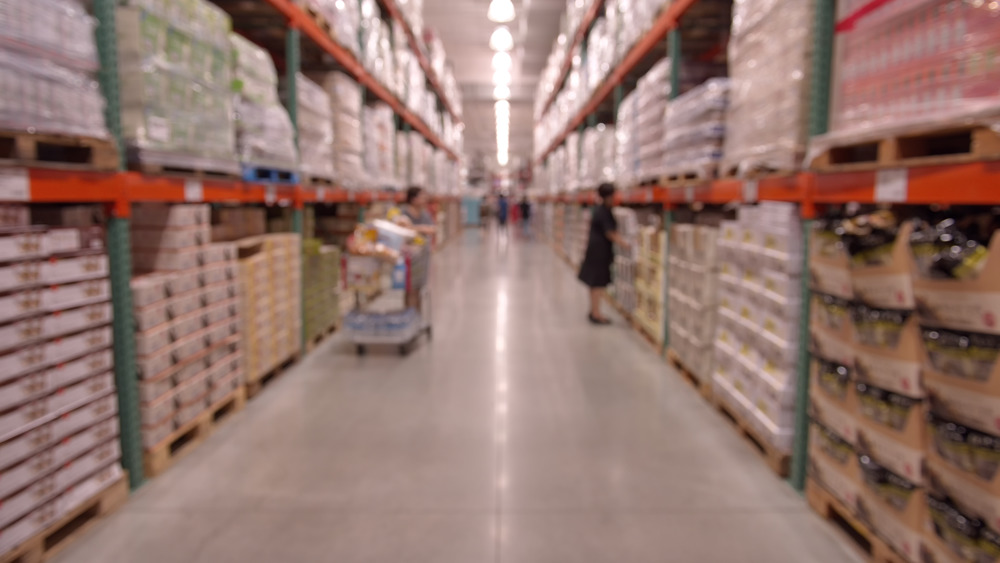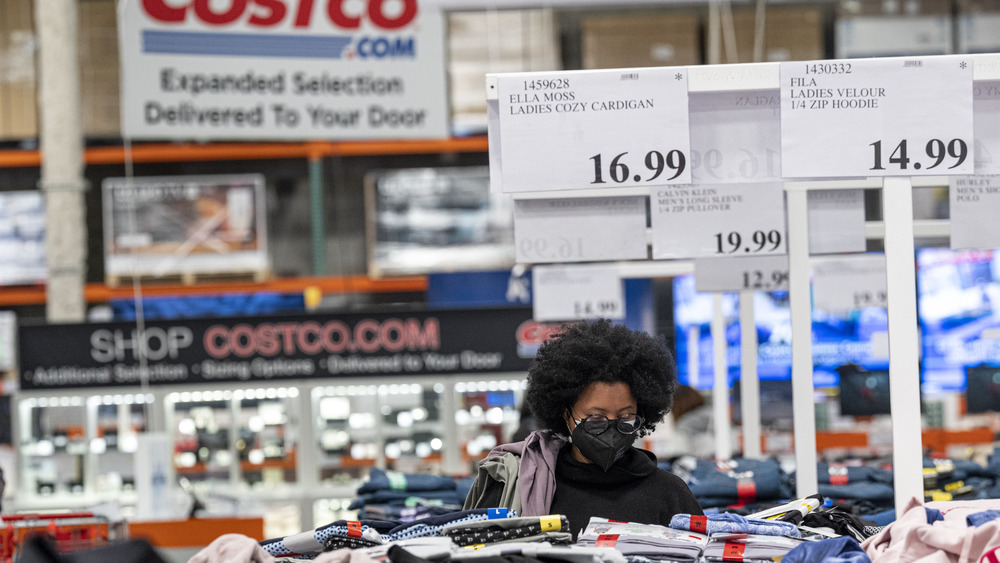You've Been Getting Lost In Costco All These Years For A Reason
If you're a Costco member, you're aware of the unique shopping experience the bulk-product-filled discount store provides its customers. For an annual membership fee, you can grab a giant cart and wander sky-high aisles of food, home goods, electronics, clothing, and other products to your heart's content. But if you are someone who appreciates the savings but gets seriously lost and overwhelmed inside the store, you aren't alone. If the bright warehouse lights and giant boxes and giant carts and people everywhere weren't enough, the layout of the store, which you might excuse because "well, they have to fit a whole lot of stuff in there and they're doing their best," the truth is that the layout is intentional.
We know what you're thinking: "Wait, Costco is trying to discombobulate me and cause me anxiety on purpose?!" No, not exactly. But the piles of sweatpants, flashing TVs, and sparkling jewelry cabinets you have to walk by in order to find the chicken and lettuce you came for are in your way for a reason.
Impulse buys are the name of the game
We've all heard of "impulse buys," things we spontaneously grab while shopping for other, actually-needed things. When we hear "impulse buy," we tend to think about the racks of magazines, chewing gum, and candy bars that are at the checkout counters of regular grocery stores. But just like Costco is larger-than-life where it comes to grocery shopping, its store layout is doing the same things regular supermarkets do, but on a much larger scale. Forcing you to walk through a maze of clothing and jewelry and electronics before you can finally reach the promised land of meat fridges and fresh veggies has one purpose only: To try to entice you into picking up as many unintended impulse purchases as possible (via CBS News).
Is it really worth making their customers feel lost and overwhelmed to get a few people to buy a surprise pair of sweatpants? Actually, yes. According to a 2018 survey by Slickdeals.net that was published by CNBC, the average American shopper spend a shocking $5,400 per year on impulse buys. That's a lot of unintended spending on the part of the customer and a lot of additional revenue for the retailers. Retail Designer Stan Laegreid calls the type of store layout that Costco uses a "racetrack" design, funneling customers and their oversized carts past as many potential temptations as possible.
Feel like going on a Costco "treasure hunt?"
The "racetrack" store design isn't the only bewildering trick Costco uses to inspire you to spend — have you ever bought Cheerios one week, and then gone back to that exact spot the next week, only to find that shelf is now filled with something else entirely? You're not losing your mind. Products are moved around intentionally and frequently to keep customers walking around the store longer. Remember: The longer you're in there, the more things you'll pass by, and the more things you're likely to grab. This is known as the Costco "treasure hunt."
"They purposely move products around to different locations and are constantly rotating a certain percentage of their inventory to new products," Tony Jacobson, who worked at Costco for 13 years wrote on Quora. "This creates a 'treasure hunt' experience as you shop and helps you discover new products that you may not normally see on your shopping visits."
In other words, even if you try to avoid impulse buys and prevent that feeling of overwhelm by focusing just on the items on your carefully-curated shopping list, you might still be thwarted into wandering around like a lost puppy. Sneaky? Yes. Uncool? Pretty uncool, in our opinion. But will we keep going back to Costco for bulk razors and giant boxes of Cheerios? Also, probably yes.


